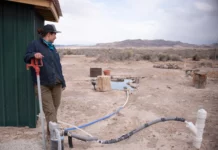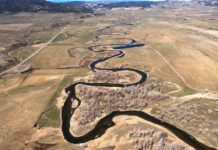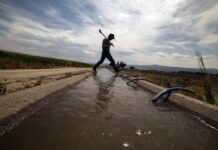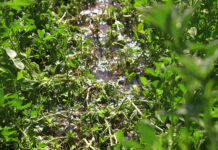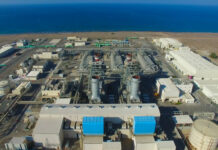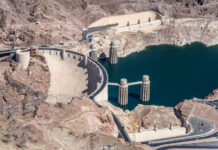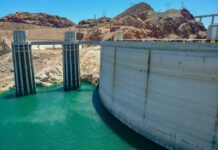Once ‘paradise,’ parched Colorado valley grapples with arsenic in water
Decades of climate change-driven drought, combined with the overpumping of aquifers, is making the valley desperately dry — and appears to be intensifying the levels of heavy metals in drinking water.
Upper Colorado River states add muscle as decisions loom on the shrinking river’s future
Upper basin states seek added leverage to protect their river shares amid difficult talks with California and the lower basin
Colorado River farm fallowing pilot moves forward, with approvals slated for next month
Farmers and ranchers in Colorado have submitted proposals to help restore the Colorado River, but the impacts remain uncertain.
Crop in the crosshairs
The federal government is trying to save the water supply for 40 million Americans. It has released three possible plans to protect the Colorado River Basin, which is facing...
Urban Water Conservation Success in the Colorado River Basin
In the past few decades, cities in Arizona, Colorado, and Nevada have vastly increased their water use efficiency. They’ve also learned lessons that can inform other cities’ efforts.
Long-distance water
There’s desperation in the desert – for communities that could run out of water if the Colorado River keeps shrinking from overuse and climate change. Many are now looking...
Photos: Lake Mead and Hoover Dam aerials, May 2021
This page features aerial images of Lake Mead and Hoover Dam, along the Colorado River near Las Vegas, Nevada.
Lake Mead is the nation's largest reservoir by capacity, but its...
High stakes standoff
A high stakes standoff is playing out over how to save the Colorado River. And with the biggest man-made reservoir in America — Lake Mead — running dry, time...
A Colorado River flows drop and tensions rise, water interests struggle to find solutions...
Experts warn that climate change has rendered old assumptions outdated about what the Colorado River can provide, leaving painful water cuts as the only way forward.
Can the Ancient Humpback Chub Hang On in Today’s Grand Canyon?
It has survived invasive predators, too-cold water, poisoning, electro-shocks, and a ginormous dam. Still, the chub persists.



